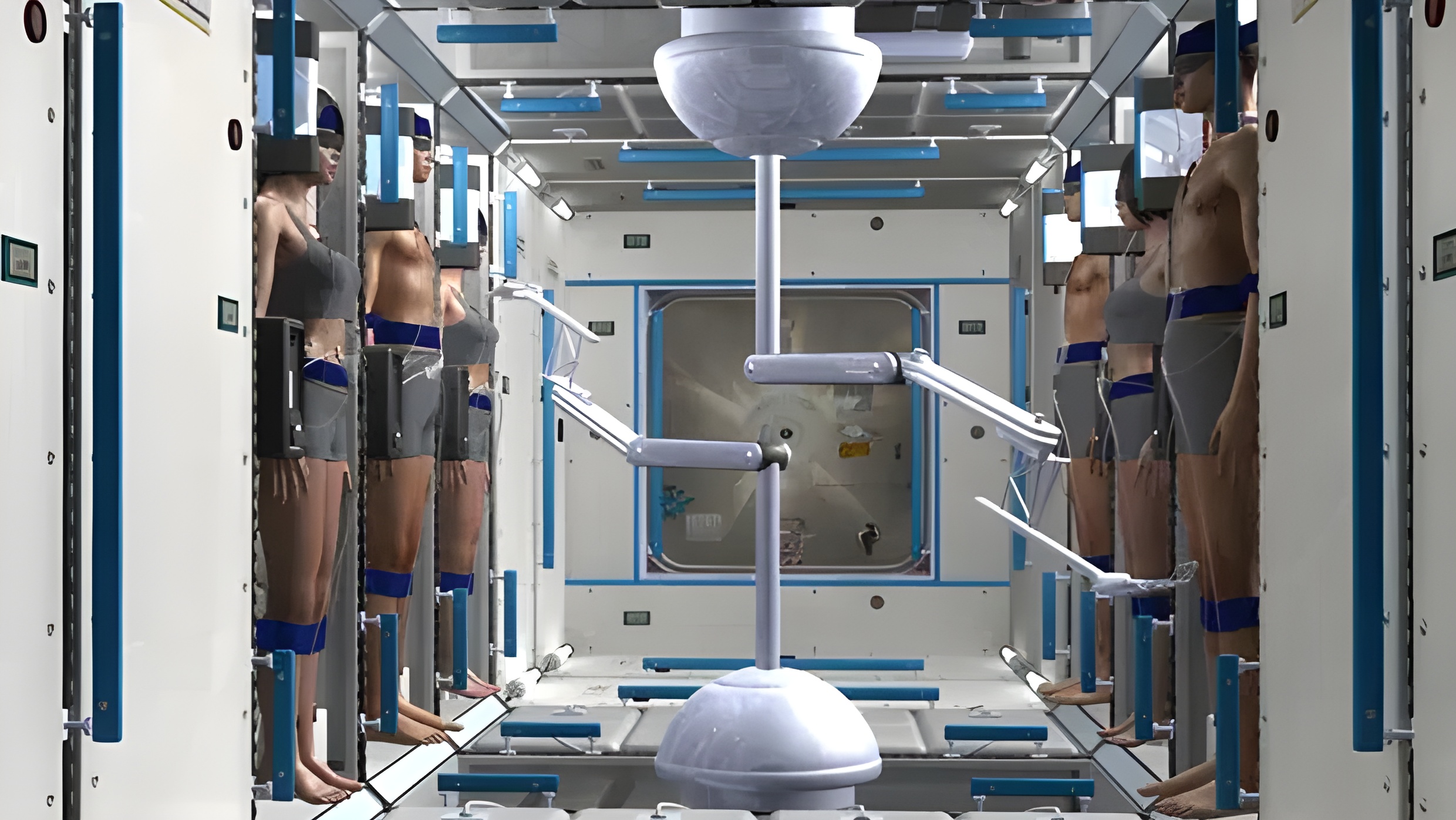
Where is the research in 2025 on Stasis for spaceflights? (Space Tech)
Views: 1
What is the state of the research on Stasis in 2025? – by Ritwaj Ranjan, Space News Contributor, India – Photo credit: Spaceworks Enterprises – Video credit: Insane Curiosity – NASA and SpaceWorks Enterprises are leading research into synthetic torpor for long-duration spaceflight, focusing on therapeutic hypothermia and metabolic reduction strategies. The leading research includes a torpor-inducing module that reduces crew habitat mass by 75% and volume by 90% for Mars missions. Astronauts cycle through 10-14-day stasis periods using intravenous cooling and pharmaceuticals, with crew rotation ensuring continuous operational oversight. This reduces resource consumption, minimizes psychosocial stress, and mitigates bone/muscle atrophy and radiation exposure risks during transit. NASA’s Innovative Advanced Concepts (NIAC) program has advanced this research to Phase II, focusing on mission architecture feasibility. ESA’s focus lies in mitigating long-duration spaceflight effects, which could indirectly support future torpor research. Prioritizing space medicine, ESA focuses on foundational human spaceflight capabilities rather than advanced stasis systems. The long-term effects of repeated torpor cycles remain unstudied in humans. NASA’s progress suggests this technology could transition from theory to practice within the next decade, potentially revolutionizing crewed deep-space missions. The research and development of stasis systems for long-duration spaceflight is an emerging field pursued by major space agencies such as NASA, Roscosmos, ESA, China, and India.
NASA and SpaceWorks Enterprises are leading research into synthetic torpor for long-duration spaceflight, focusing on therapeutic hypothermia and metabolic reduction strategies. Key developments include a torpor-inducing module that reduces crew habitat mass by 75% and volume by 90% for Mars missions. Astronauts cycle through 10-14-day stasis periods using intravenous cooling and pharmaceuticals, with crew rotation ensuring continuous operational oversight. NASA’s progress suggests this technology could transition from theory to practice within the next decade, potentially revolutionizing crewed deep-space missions. China is advancing space medicine research for long-duration missions, while ESA and Roscosmos focus on international cooperation and astronaut health.
United States (NASA and private sector).
NASA has been actively exploring the concept of torpor or induced hypothermia as a means to reduce metabolic rates and life support requirements during long space missions, such as to Mars. SpaceWorks Enterprises, supported by NASA’s NIAC program, has developed advanced habitat concepts that cycle crew members through torpor states lasting 10-14 days using therapeutic hypothermia techniques combined with pharmaceuticals to reduce metabolic demand and resource consumption. This approach could drastically reduce habitat mass, improve mission safety, and enable longer missions by reducing the psychological and physiological burdens on astronauts. The research is at the phase of feasibility studies and habitat design concepts, aiming to move from speculative to viable within a few years.
China.
China’s space medicine research focuses extensively on astronaut health support for long-duration missions, including nutrition, cardiovascular, respiratory, and nervous system effects of extended spaceflight. While direct research on stasis or torpor systems is not explicitly detailed in available sources, China is advancing space medical experiments and human system risk mitigation to support longer missions, which could underpin future stasis-related technologies.
ESA & Roscosmos.
ESA is currently more involved in international cooperation and infrastructure development for human spaceflight, such as supporting India’s Gaganyaan missions and collaborating on docking systems and astronaut training. ESA’s research includes studying long-duration spaceflight effects and preparing for exploration missions, but direct stasis system development is not prominently reported. Roscosmos has expressed interest in long-duration mission challenges and has conducted isolation experiments (e.g., MARS-500), but specific stasis system research is not clearly documented in recent public sources.
India.
India, through ISRO, is entering human spaceflight with the Gaganyaan program and collaborating with ESA for ground support and mission operations. While human spaceflight and long-duration mission readiness are priorities, there is no public indication that India is currently researching stasis or torpor systems specifically. The focus is more on mission support infrastructure and astronaut training
In summary, NASA leads in active research on stasis systems using therapeutic hypothermia and torpor to enable deep space missions, with promising habitat concepts under study. China is advancing space medicine for long-duration flight but without explicit public stasis system research. ESA and Roscosmos focus on international cooperation, astronaut health, and mission infrastructure, with less emphasis on stasis systems at present. India is developing human spaceflight capabilities and collaborating internationally but has not publicly pursued stasis research. This field remains largely experimental and interdisciplinary, requiring advances in medical science, engineering, and human factors to realize practical stasis systems for space exploration.
— Ritwaj Ranjan.
About the Author.
Ritwaj Ranjan is a full-stack web and mobile applications software engineer from Bangalore, India, and, space news contributor to Interplanetary Television. With a strong foundation in frontend and backend development technologies, he has worked at Othor.ai and Bhopal. He has designed and deployed over 20 user-centric interfaces with React.js, resulting in a 30% increase in customer satisfaction scores. Ranjan has also led a team in website development, resulting in a 40% increase in client customization efficiency.
- Bone atrophy
- Cardiovascular health
- Crew habitat mass
- Gaganyaan program
- Human spaceflight
- Innovative Advanced Concepts (NIAC)
- Intravenous cooling
- Isolation experiments.
- Long-duration spaceflight
- Mars missions
- Metabolic reduction
- Microgravity
- Muscle atrophy
- NASA
- Neurological health
- Pharmaceuticals
- Psychosocial stress
- Radiation exposure
- Resource consumption
- Space medicine
- SpaceWorks Enterprises
- Stasis technology
- Synthetic torpor
- Therapeutic hypothermia
- Torpor-inducing module

0 Comments